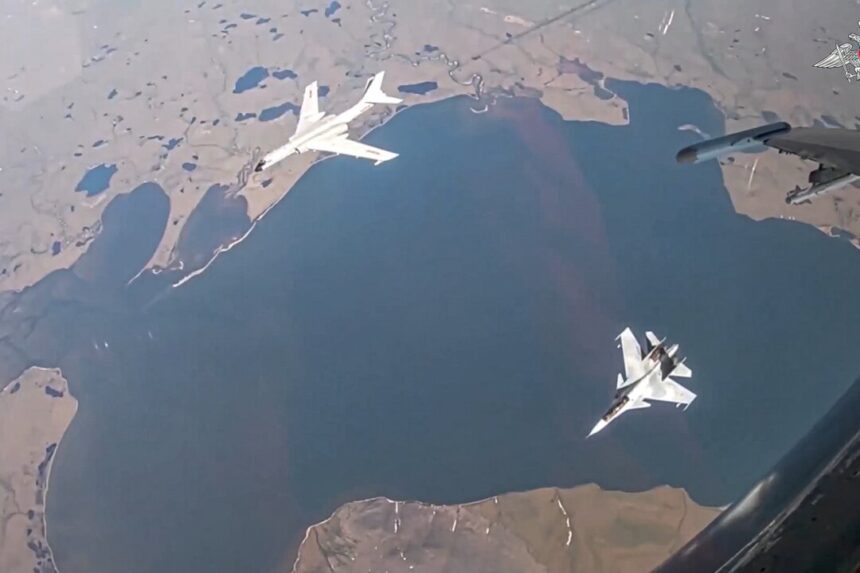The Chinese military’s first recorded operation near the Alaskan maritime zone is seen as part of Beijing’s ongoing ‘gray zone’ tactics, according to analysts. The U.S. military recently disclosed this operation, which involved Chinese aircraft participating in a joint air exercise with Russia. The aircraft were intercepted by U.S. and Canadian fighter jets. This move by China is believed to be aimed at strengthening its strategic presence in the North Pacific and Arctic Circle, indicating growing impatience with American policies. The incident, while not breaching sovereign airspace, was closely monitored by NORAD to ensure the safety of North American shores. Defense Secretary Lloyd Austin reassured the public of the nation’s preparedness in responding to such activities.
The joint patrol operation by Russian and Chinese aircraft, as explained by the Russian Ministry of Defense, was conducted over international airspace and not targeted at any third party. However, military analyst Su Tzu-Yun views this as a deliberate act of intimidation by China and Russia, especially given the proximity to Alaska, a critical region for U.S. missile defense. The increasing frequency of such joint military exercises raises concerns about the intentions of these countries and their challenge to maritime democracies. The alliance between the CCP and Russia signifies a major security concern globally.
Furthermore, the CCP’s military activities near Alaska are seen as utilizing ‘gray zone tactics’ by associate researcher Liu Hsiao-Hsiang. These tactics are designed to intensify regional military presence and signal growing impatience with American policies. The joint aerial and maritime patrols in various regions, while seemingly targeting Japan, ultimately aim to recalibrate the balance of power in the Asia-Pacific region. The strategic significance of the joint flight near Alaska underscores the importance of this region for both China and Russia in terms of military and economic interests. The Arctic region has also become a focal point for power games due to the melting of Arctic ice, with China positioning itself as an important stakeholder in Arctic affairs. In this article, China commits to deep involvement in Arctic affairs. Just as the U.S. Department of Defense released its “2024 Arctic Strategy” two days before the China-Russia joint patrol in the Alaska Air Defense Identification Zone, Deputy Secretary of Defense Kathleen Hicks highlighted the Arctic’s importance in national defense and sovereignty. The U.S. strategy aims to secure and stabilize the region, especially in response to challenges posed by China and Russia in the Arctic. Hicks expressed concerns about China seeking greater influence and access in the region, emphasizing the need for the U.S. to adapt to evolving dynamics in the Arctic. Commercial and military collaborations between China and Russia further underscore the importance of U.S. military readiness in the region. Additionally, Xin Ning contributed to this report.
Source link





